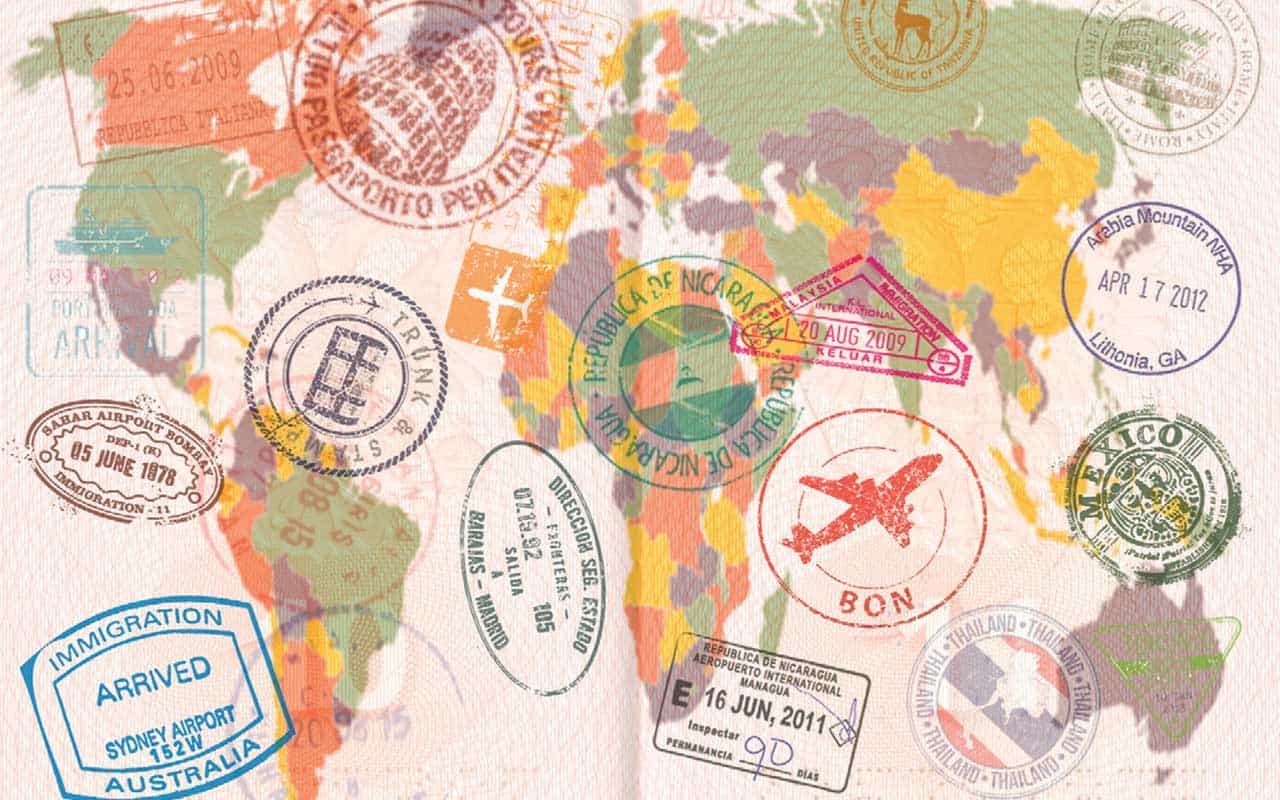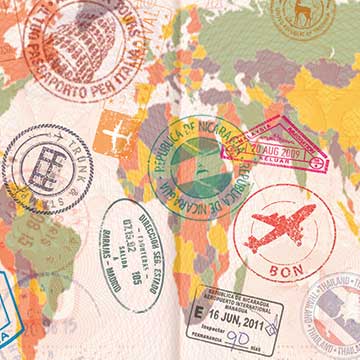This Month’s Featured Article

Raising your child’s CQ
 We live and work in a global society where interactions with other cultures happen more frequently. Trade, working abroad, decreasing costs of international travel, increased technology and connectivity, immigration, and social media are all making the world smaller. These factors make it imperative to increase our CQ or Cultural Intelligence.
We live and work in a global society where interactions with other cultures happen more frequently. Trade, working abroad, decreasing costs of international travel, increased technology and connectivity, immigration, and social media are all making the world smaller. These factors make it imperative to increase our CQ or Cultural Intelligence.
Culture smarts
Cultural Intelligence (CQ) is the ability to adapt and thrive in different cultural settings. CQ goes further than Emotional Intelligence (EQ), which is the ability of an individual to detect the emotional state and needs of those around them.
High CQ individuals are tuned into the manifestations of culture, including gestures and body language. They may not be experts in another culture, but use intellect, empathy, imagination, and understanding to read situations and make non-judgmental rational decisions that avoid stereotypes and bias. CQ suggests that this ability can be analytically measured, cultivated, and can be a predictor of success in cross-cultural settings.
Exposure to CQ, along with concepts such as global mindset, cross-cultural competence, self-reference criterion, and unconscious bias are increasingly a part of onboarding and training of employees for global companies. (See accompanying text box for definitions.)
Multi-national enterprises (MNEs) that have business activities and affiliations in other countries rely on cultivating employees who are culturally savvy, flexible, and adaptable. Because of this, much of the discussion and research for developing CQ and related concepts are found in workplaces and academia.
Yet, a strong CQ is a capacity that can be developed early on. Don’t wait for your child to work for a global company for them to enjoy the benefits of embracing difference, diversity, and appreciating how others live, work, and play.
Developing the CQ of you and your family on a personal level will better prepare your children to thrive in a global world both economically and personally, deepen an understanding and appreciation for other cultures, encourage connection to diverse people, and add richness to their lives. It also draws attention to our similarities. Despite cultural differences, we all seek love and connection, safety, providing for our families, food, shelter, and happiness.
Americans abroad
Americans are increasingly working, living, going to school, and engaging in leisure travel across the globe. In 2018, there were nearly 138 million United States passports in circulation – that’s about 42 percent of all Americans.
Although the United States doesn’t formally track citizens working abroad, in 2016 the State Department’s Bureau of Consular Affairs estimated there were about nine million Americans living and/or working abroad as expatriates.
According to data from the US Department of Commerce’s National Travel and Tourism Office, in 2018 Americans took over 93 million trips to other countries. Of that total, 40 percent of travel was to Mexico, 15 percent to Canada, and 45 percent to destinations overseas including Europe, the Caribbean, Asia, Central and South America, Oceania, the Middle East, and Africa.
The Institute of International Education’s Open Doors survey calculates that over one million international undergraduate college students studied in the US during the 2017-2018 academic year. Conversely, in 2016-2017, 332,727 US students studied abroad for academic credit and nearly 37,000 additional students took part in non-credit work, internships, volunteer opportunities, and research abroad.
With more and more of us interacting with other cultures, enhancing CQ is necessary and there are ways to enhance it for you and your family. They involve setting the intention to create cultural awareness, avoiding judgmental comparisons, becoming aware of assumptions, biases and cultural appropriation, and making time to reflect upon and talk about what you’re experiencing as a family. And since we know our kids look to us for cues and reactions, raising your own CQ is definitely part of this process.
Local travel
Make travel a budgetary priority, but don’t let your financial limits keep you from raising your child’s CQ. According to a Pew Research Center report on immigration, New York City has the largest concentration of immigrants in the country, followed by Washington, DC, Boston, and Philadelphia. These cities are within driving distance and great destinations for family day trips and vacations. Finding their ethnic neighborhoods and restaurants are a Google search or travel guide away.
Museums dedicated to other cultures, their arts, and artifacts are illuminating ways to build knowledge and awareness. In New York City alone there are many museums that explore diversity and culture. The Museum of Chinese America, Jewish Museum, El Museo del Barrio, Africa Museum, Tenement Museum, and Ellis Island are just a few.
Globe trotters
If your budget can withstand international travel – get your child a passport and go! Immersing your family in another culture, observing customs, interacting and communicating with locals, eating authentic food, and navigating neighborhoods and transportation systems help build confidence in your child and create lasting shared memories.
Make the trip child-friendly and age-appropriate. Spend time in the parks and let them loose in playgrounds. They’ll discover non-verbal communication and that play is a universal language.
Eat
Cooking the food of other cultures is a perfect way to build your child’s CQ and build meaningful family time. What’s on the menu, the sourcing of ingredients and food preparation, table manners, and mealtimes can be instructive and rewarding – and make for lively mealtime conversation. So pick a country, research a recipe and make it. Along the way, learn some fun mealtime facts about etiquette such as burping, slurping, eating with your right hand only, and how to use utensils – whether it’s forks, spoons, chopsticks, or hands.
If cooking is not your thing, seek out local ethnic neighborhoods. When building your day trip or vacation itinerary, combine exploring one of these neighborhoods with a visit to a culturally-themed museum, followed by a meal.
Research the restaurant menus and typical dishes before you go. Restaurant websites, TripAdvisor, and Yelp can ease the anxiety of mistakenly ordering a dish outside your comfort zone. Don’t let a picky eater stand in your way, it’s amazing how many ways chicken and rice – my son’s go-to meal – can be prepared.
McDonald’s is my kind of place
When traveling abroad, if all else fails, go to McDonald’s. Even Mickey D’s restaurants bow to cultural differences and they’re in over 100 countries. Compare the menu options to the ones here and explore something new along with the tried and true Happy Meal.
Don’t feel like you’re selling out. Your kids need to eat and you need to stay sane. If The Economist magazine can use the Big Mac Index to measure purchasing power across countries, you can eat that burger and compare that price for yourself! Use it as an opportunity to teach currency conversion with an item that your kids are familiar with and discuss what makes McDonald’s a global brand that provides consistency of consumer experience with accommodations for local cultural preferences.
Read books
Studies show that reading fiction fosters empathy and cultivates moral imagination – both critical to CQ. Memoirs, biographies, and non-fiction accounts of people and events are culturally educational.
Books exploring multiculturalism and diversity are low-cost ways to introduce your child to other cultures. Discuss the themes, plot, and illustrations with your child. Explore the setting by finding the country on a globe, identify the languages spoken, use maps to calculate the distance from your home, and compare time zones, geography, and weather.
Your local librarian can point you to children’s and young adult books that create cultural awareness. Websites such as We Need Diverse Books and Multicultural Children’s Book Day also contain recommended reading lists about racial, ethnic, and cultural diversity.
Past and present
Age-appropriate historical and current-event topics can foster discussion around cultural issues and increase your child’s understanding of the United States as a dominant culture on the world stage, both historically and today.
With the internet, it’s easy to find stories about the same topic written from different perspectives from news outlets around the globe. The website AllSides has a range of topics that can be explored from left, right, and center and Nations-online contains a list of newspapers from around the globe along with the language they’re published in. Pick a country and topic and compare its coverage to that of the US.
Talk about differences in perspectives and foster an appreciation for the multiple sides. The world is a big place and the issues it faces are not black and white. Helping your child see the grey in life will develop critical and adaptive thinking skills and help your child cope with life’s complexities.
Technology
Make use of social media and apps to enhance your child’s knowledge of the world. A quick internet search on the best apps to increase cultural awareness yields an array of fun ways to introduce diversity. Highly rated apps include Toca Life and Dora and Friends.
With your older children, listen to podcasts that promote cultural awareness while you’re driving them where they need to be. That car time, when they’re literally trapped with you, can be put to a noble purpose and create opportunities for conversation. The Center for Intercultural Dialogue website has a list of podcasts and videos it recommends.
Creating a greater knowledge of geography and map skills is also useful since culture is impacted by the geographical traits of a country. The Educational App Store website contains a list of recommended geography apps. Compete against your kids and see how your own knowledge stacks up.
Study abroad
Encourage your child to travel abroad in high school and college. There is nothing more paradigm shifting than immersing yourself in another culture. These opportunities will teach your child self-reliance, enhance communication and observational skills, and allow them to discover their biases and stereotypes.
If travel abroad is not an option, host a foreign student in your home. The AFS USA Intercultural Program website provides program information about traveling abroad or hosting a foreign student.
Mapping the future
Prioritizing your child’s CQ and global mindset prepares them for their personal and professional future and creates opportunities for family dialogue and shared memories. While discovering and celebrating cultural differences you can also be highlighting shared human values.
Exploring the big blue marble can be done in age-appropriate, fun, and incremental ways. It can be incorporated into your family’s routines and vacations and build your child’s CQ, so stop the world – and help them get on!
By Mary B. O’Neill, Ph.D. | info@mainstreetmag.com


